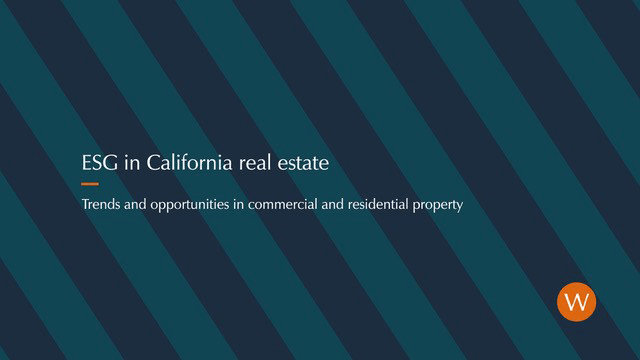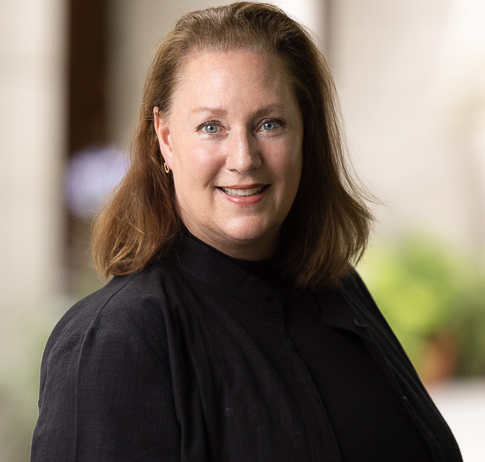Advances in construction materials and renewable energy technologies are transforming the spaces we live and work in. Withers' Loretta Thompson and Faring's Brendan Kotler examine the ways in which environmental, social and governance (ESG) considerations are changing the market for commercial and residential real estate, the risk of being left behind in unsustainable properties and how buyers are also pushing for healthier, more sociable and sustainable designs.

Note: We have provided a transcript of the video if you are unable to listen to the audio. This transcript is generated using a combination of speech recognition software and human transcribers and may contain errors.
Loretta Thompson | Withers (0:09): New developments in the real estate market go from a full gamut of things, and a lot of them are determined by what do the clients want? What does the consumer want? What is going to make the space more inviting? What's going to make the home, the office, the building, something that people want to go to that provides a social context but also is healthier and can sustain itself where you can participate as a tenant or as a homeowner. So the trends are more social oriented, how we integrate people into our sustainable efforts.
Brendan Kotler| Faring (0:59): Some of the major new requirements that we've seen in the construction and development space really are around kind of solar voltaic panels. So solar has been kind of the mainstay when you think about sustainability and greening of buildings for a long time. There are certainly been changes to other materials, whether you're talking about different types of wood or different type of construction materials, paint, concrete. But the first and foremost really starts with solar and your ability to be kind of off the grid or minimize your energy draw as a development.
Loretta Thompson | Withers (1:28): What's new in the last couple of years is the battery stations that store the excess energy and then if, if possible, sell some of it back to the grid.
Brendan Kotler| Faring (1:41):What's really interesting right now is there’s been a shift between what was originally going to be a mandated, you’ve got to go government focused. You either have to put panels on as a code requirement or you have to put panels on as kind of almost like a greening of your kind of corporate image. We're now getting to the point where people are doing it because economically it's starting to make a little bit more sense.
Loretta Thompson | Withers (2:04): Some of the challenges in creating greener spaces is finding the capital to make those changes. Resilient buildings cost money to build because they're using the latest technology. People are looking for sustainable financing and that's really taking off right now. It's called PACE financing and it stands for Property Assessment Clean Energy. It’s been around for a while but now it's taking off because most states have adopted ordinances and laws that help the cities raise the money to get that financing. So what you see is municipal bonds are being sold, that money is being used to offer to capital equity people who then package up a lending source and put together sustainable financing so that you can now make all of the replacements you need to upgrade to make a sustainable mechanical system, interior, etc.
Brendan Kotler| Faring (3:20):As has been the practice over the last few decades every time there's a statewide code cycle change when it comes to building codes there's going to be enhanced sustainability requirements anytime you're doing any sort of new construction or redevelopment. What owners need to be mindful of is that because the jump in terms of the amount of solar being required on new buildings, battery storage and EV charging the spread between older generation buildings that were built before this code cycle change and newer buildings that will be built after will be pretty dramatic. So if the market, if the users, really start to take advantage of these sustainable features and start to value them appropriately, then you're going to see a devaluation of the, even relatively new, but now considered second generation buildings and maybe even a premium for buildings that were built with these sustainability features.
Loretta Thompson | Withers (4:15):Most of my practice is in working with wealthy families, individuals and small niche companies to help them identify the right kind of real estate, develop it and make it healthy and sustainable so that they have a pride of ownership and they can attract the best tenants and the best owners.
The Global Rethinkers
The way we live and use our buildings is changing rapidly, from sustainable construction to renewables. Check out our hub for more information.




